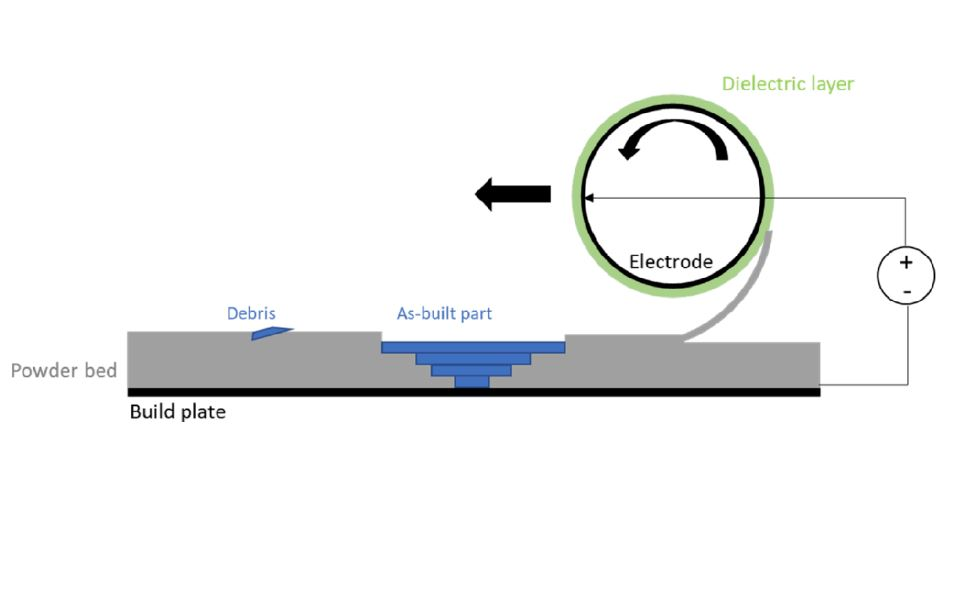Laser powder bed fusion additive manufacturing (LPBFAM) machines have grown in popularity for their capability of producing precise metal parts. For a multi-materials LPBFAM, the conventional method of contact spreading using a recoater rake does not work effectively because the spreading operation would distort the material pattern on the powder bed stage. There is a need for a non-contact-based powder removal technology.
The novel approach developed by LLNL researchers is to use an electric field as the non-contact-based powder remover. The main components of the remover are an electrode and a dielectric layer. As the remover moves across the stage, a high voltage is applied to the electrode that forms an electric field between the electrode and the powder bed. Under the influence of the electric field, the powder particles migrate towards the electrode and attach to the dielectric layer. The purpose of the dielectric layer is to prevent charge exchange between the particles and the electrode so that the particles stay attached to the dielectric layer after the high voltage is turned off due to electrostatic force. Tunable variables like electrode distance, voltage, and scanning speed all affect the electric field strength which in turn changes the powder removal rate. As the powder remover leaves the powder bed, the system performs a cleaning step that utilizes mechanical brushing, or a strong negative voltage applied to the electrode. The removed powder is deposited into the powder overflow, which could later be recycled after the printing process is completed.
- Lower manufacturing costs by mitigating powder anomalies, uneven spreading, and material waste in LPBFAM machines.
- Maintains the multi-material patterning on the powder bed.
- Maintains the flatness of a powder bed by removing a controllable powder layer if powder bed anomalies or material shrinkage is present.
- Reduces the possibility of damaging the powder bed by dragging debris generated during the printing process because the debris are lifted directly upward by the applied electric field.
- Multi-material patterning in LPBFAM machines
- Powder recycling and LPBFAM machine maintenance
Current stage of technology development: TRL 3 going on TRL 4 (validate the system in a simulated environment). A prototype is being developed for installation on the test bed and the Fraunhofer printer.
LLNL has filed for patent protection on this invention. Related patent application:
US Patent Application Publication No. 2021/0260822 ELECTROSTATIC PARTICLE SPREADER FOR POWDER BED FUSION ADDITIVE MANUFACTURING published 8/26/2021


